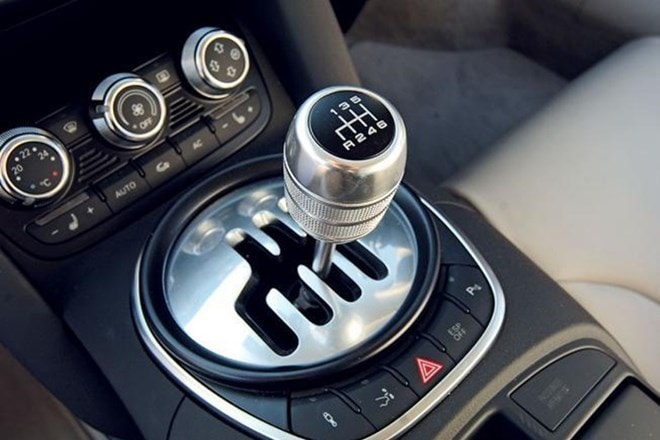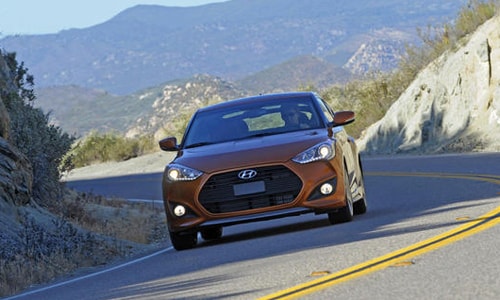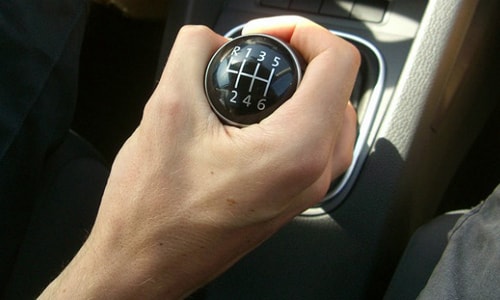Some common mistakes when driving a manual transmission car
(Baonghean.vn) - Manual transmission vehicles have a structure that requires a lot of driver intervention, so some incorrect operations will affect the durability as well as safety when the vehicle is on the road.
 |
There are some incorrect habits that many drivers still use when driving a manual car. Here are some common mistakes.
Return to N when going downhill
Shifting to N when going downhill is similar to cutting the clutch when cornering, but it is even more dangerous, because the slope causes the gravity to act on the car to be large, increasing inertia rapidly. Steep roads are often located in mountainous terrain, when constantly winding, requiring a lot of steering. Shifting to N increases the risk more than ever. In this case, it is necessary to shift to a lower gear to brake the car using the engine brake, according to the principle of "up which gear, down that gear".
Front clutch, rear brake
Normally, new drivers have the habit of clutching first and braking later. Some experienced drivers also have this habit because they are afraid of stalling the engine. If moving at low speed, clutching first and braking later does not have much effect because the inertia of the vehicle is low. However, if the vehicle is moving at high speed and the driver releases the clutch first to stop the vehicle, the brake will lose its effect and the vehicle will lose traction like when releasing the clutch when cornering.
Therefore, the advice of people with a lot of experience driving cars is that in all cases, you should brake first, and when the car shows signs of "stumbling", then press the clutch to disconnect before shifting gears or continuing.
 |
Do not use the clutch to hold the vehicle on a slope.
When stopping on a slope, many drivers are used to releasing the clutch to the point where the vehicle is stationary. However, this is a way to damage the gearbox as parts such as the clutch pads, drive gears, and bearings will have to endure a great deal of friction to keep the entire mass of the vehicle stationary on the slope, while the brakes on all four wheels can handle this responsibility easily.
In fact, this feature only allows the car to stand still for 1-2 seconds so that the driver has time to switch from the brake pedal to the accelerator pedal. Use the handbrake when parking for more than 5 seconds. If you are afraid that the car will slide down the hill while moving, release the clutch pedal, step on the accelerator and slowly release the handbrake to let the car crawl up the hill.
Squeeze gears to accelerate
The high gear on the gear lever helps the car go fast but still keeps the engine rpm low, helping to save fuel and the machine parts operate with the lowest pressure. When wanting to accelerate, drivers often shift down to 1 gear, increase the throttle, then shift back to the old gear, this helps the car accelerate very quickly but is also more harmful to the gearbox than pressing the throttle to accelerate.
In addition, only change gears when the vehicle reaches sufficient speed, limit the habit of changing gears when the engine rpm reaches the red line. Forcing the gearbox to work under great pressure for a long time will certainly reduce its lifespan.
Cut the clutch when cornering
Disengaging the clutch when cornering is a dangerous habit of many drivers. When disengaging the clutch, the car only runs on inertia without being braked by the engine, so the feeling of the car running smoothly, turning "straight" when cornering, makes many drivers like it. However, this is a dangerous habit.
When the wheel is only rolling by inertia, the braking system is less effective, requiring a longer braking distance, making it difficult for the driver to control the speed if the steering wheel is over or under steered. In addition, the wheel's grip on the road is reduced, increasing the risk of losing control.
 |
Lazy to change gears
Being lazy to change gears when needed will make the car sluggish and not ensure traction.
Many drivers have the habit of overusing the accelerator, being lazy to shift to a lower gear. Therefore, when encountering traffic situations where they have to go slowly, follow a tailgate or then need momentum to overtake, many people still use the "single gear" style. In many cases, they should use a lower gear to ensure traction, helping the car accelerate quickly (when overtaking), but the driver still uses a high gear (5th gear), causing the car to be sluggish, taking a long time to overtake and possibly leading to danger.
 |
More economical than automatic
The notion that manual transmission cars are more fuel-efficient than automatic cars was only true in the past, when automatic cars were not yet popular, and the technology was new, so they consumed more gas. But now, automatic cars account for the majority, and technology is constantly improving, making the consumption equal or even less than the corresponding manual car.
Whether a car is fuel efficient or not depends on driving skills. With manual transmission, you need to drive in the right gear and change gears often to maintain engine durability. If driving skills are not good, any transmission will consume the same amount of fuel.
Notes when driving a manual transmission car
- Shift in and out at the correct speed:It is a fact that most drivers often change gears when the engine is not at full rpm, causing the car to be sluggish and unable to release the engine. If you have not reached the speed limit and shift into a higher gear, the car will be sluggish and when you step on the gas, the car will not accelerate (running in a forced gear).
If you shift gears properly, the car will be strong enough to shift into the following gears and keep the engine more durable. In addition, with quick gear shifting (reducing the throttle and releasing the clutch quickly - shifting gears - slowly releasing the clutch while increasing the throttle), handling obstacles on the road well will help you go faster and smoother.
- Use the clutch pedal properly:When using the clutch, what makes the clutch wear out quickly is not due to frequent use or running the clutch loose, but rather the clutch suddenly coming into contact with the engine's flywheel or the speed of the engine's flywheel and the primary clutch when in contact is not at the same speed, or the vehicle speed and engine rpm are not suitable.
When pressing and releasing the clutch, if the vehicle does not stop or jump forward, it means the operation is correct. When releasing the clutch, the engine sound does not change and the vehicle speed still moves smoothly.
Only depressing the clutch when changing gears is not taking advantage of its advantages. When driving on bad roads, you should release the clutch at the right time to avoid the car jerking. When overcoming obstacles in crowded places, you should use the clutch for safety.
- Note when using the handbrake:Many drivers often use the handbrake when starting on a slope and if there are signs of rolling back, they tighten the handbrake. In fact, the handbrake is not designed to stop the car when it is moving, but only to keep the car stationary when it is stopped.
If the handbrake is not fully released while the vehicle is running, it will lead to premature wear due to brake pad slippage, but what is more dangerous is that the heat generated can boil the brake fluid, resulting in brake failure.
- When should you shift to "neutral" gear:When driving on the road, shifting the car to neutral is not recommended because it does not actually save much gas but also causes the car's inertia to increase suddenly, making it difficult for you to control the speed, easily causing you to lose control, and if you encounter an obstacle at that moment and need to brake immediately, the braking will not be very effective./.
Ngoc Anh
(Synthetic)
| RELATED NEWS |
|---|
